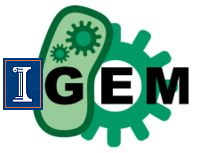Team:Illinois/Project
From 2008.igem.org
| Line 123: | Line 123: | ||
<tr> | <tr> | ||
<td align="center" ><a class="mainLinks" href="https://2008.igem.org/Team:Illinois" >Home</a> </td> | <td align="center" ><a class="mainLinks" href="https://2008.igem.org/Team:Illinois" >Home</a> </td> | ||
| - | <td align="center" ><a class="mainLinks" href="https://2008.igem.org/Team:Illinois/ | + | <td align="center" ><a class="mainLinks" href="https://2008.igem.org/Team:Illinois/Team" >Team</a> </td> |
<td align="center" ><a class="mainLinks" href="https://2008.igem.org/Team:Illinois/Notebook" >Notebook</a> </td> | <td align="center" ><a class="mainLinks" href="https://2008.igem.org/Team:Illinois/Notebook" >Notebook</a> </td> | ||
<td align="center" ><a class="mainLinks" href="https://2008.igem.org/Team:Illinois/Research_articles" >Research Articles</a> </td> | <td align="center" ><a class="mainLinks" href="https://2008.igem.org/Team:Illinois/Research_articles" >Research Articles</a> </td> | ||
| Line 133: | Line 133: | ||
</table> | </table> | ||
</html> | </html> | ||
| - | |||
| - | |||
<br> | <br> | ||
| Line 164: | Line 162: | ||
== Results == | == Results == | ||
| - | |||
<html> | <html> | ||
<head> | <head> | ||
| Line 289: | Line 286: | ||
<tr> | <tr> | ||
<td align="center" ><a class="mainLinks" href="https://2008.igem.org/Team:Illinois" >Home</a> </td> | <td align="center" ><a class="mainLinks" href="https://2008.igem.org/Team:Illinois" >Home</a> </td> | ||
| - | <td align="center" ><a class="mainLinks" href="https://2008.igem.org/Team:Illinois/ | + | <td align="center" ><a class="mainLinks" href="https://2008.igem.org/Team:Illinois/Team" >Team</a> </td> |
<td align="center" ><a class="mainLinks" href="https://2008.igem.org/Team:Illinois/Notebook" >Notebook</a> </td> | <td align="center" ><a class="mainLinks" href="https://2008.igem.org/Team:Illinois/Notebook" >Notebook</a> </td> | ||
<td align="center" ><a class="mainLinks" href="https://2008.igem.org/Team:Illinois/Research_articles" >Research Articles</a> </td> | <td align="center" ><a class="mainLinks" href="https://2008.igem.org/Team:Illinois/Research_articles" >Research Articles</a> </td> | ||
<td align="center" ><a class="mainLinks" href="https://2008.igem.org/Team:Illinois/Current_Tasks">Protocols</a> </td> | <td align="center" ><a class="mainLinks" href="https://2008.igem.org/Team:Illinois/Current_Tasks">Protocols</a> </td> | ||
| - | <td align="center" id="navactive"><a class="mainLinks" href="https://2008.igem.org/Team:Illinois/Project" >Project</a> </td> | + | <td align="center"id="navactive" ><a class="mainLinks" href="https://2008.igem.org/Team:Illinois/Project" >Project</a> </td> |
<td align="center" ><a class="mainLinks" href="https://2008.igem.org/Team:Illinois/Pictures" >Pictures</a> </td> | <td align="center" ><a class="mainLinks" href="https://2008.igem.org/Team:Illinois/Pictures" >Pictures</a> </td> | ||
<td align="center" ><a class="mainLinks" href="https://2008.igem.org/Team:Illinois/Parts" >Parts</a> </td> | <td align="center" ><a class="mainLinks" href="https://2008.igem.org/Team:Illinois/Parts" >Parts</a> </td> | ||
| Line 299: | Line 296: | ||
</table> | </table> | ||
</html> | </html> | ||
| + | <br> | ||
Revision as of 16:20, 8 August 2008
| Home | Team | Notebook | Research Articles | Protocols | Project | Pictures | Parts |
| We are the inaugural iGEM team here at the University of Illinois. We are very excited to be participating and look forward to a summer full of fun, learning, and hopefully a successful project. |
Contents |
Overall project
For our project we intend to create a yeast-based biosensor capable of detecting and signalling the presense of a pathogen. We intend to use directed evolution to develop a cell surface receptor capable of binding the pathogen. This receptor will then initiate a signaling cascade which will induce a change in the yeast, a color change for example. This project is important because there is a demonstrated need for cheap and effective monitoring of water-borne pathogens in the third world where traditional detection methods are not feasible.
Subprojects
To improve our odds of achieving our project we have decided to modulate our team into 3 disparate groups, each pursuing variant methods to accomplish the above goal, that is, cheap detection of water-bourne pathogens. The three methods and teams are detailed below.
If you were not present at the June 10th meeting, pick a group and contact the members.
Antibody GPCR Fusion
This team will attempt pathogen detection by fusing the appropriate antibody domain to a GPCR receptor and upon binding of the target protein (i.e. cholera toxin), linking the resulting signal cascade to transcription of a reporter, GFP or LacZ.
Antibody Receptor Tyrosine Kinase Fusion
This project will attempt to detect a pathogen by using a secreted antibody or antibody fusion protein.
Bimolecular Fluorescence Biosensor
A soluble biosensor that activates a fluorescent protein upon binding a specific biomolecule
Results
| Home | Team | Notebook | Research Articles | Protocols | Project | Pictures | Parts |
 "
"
